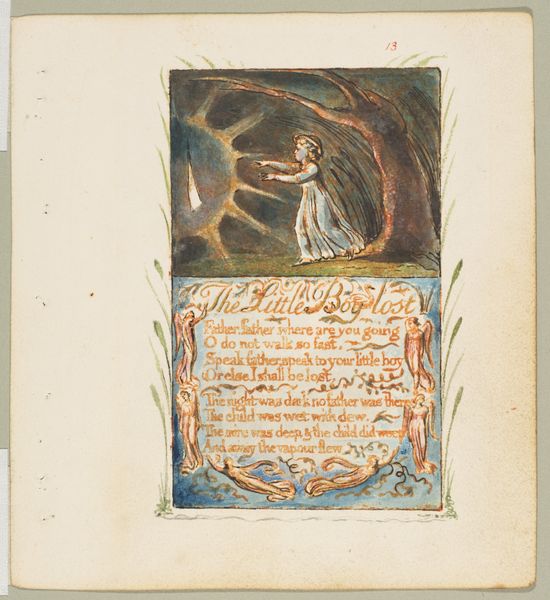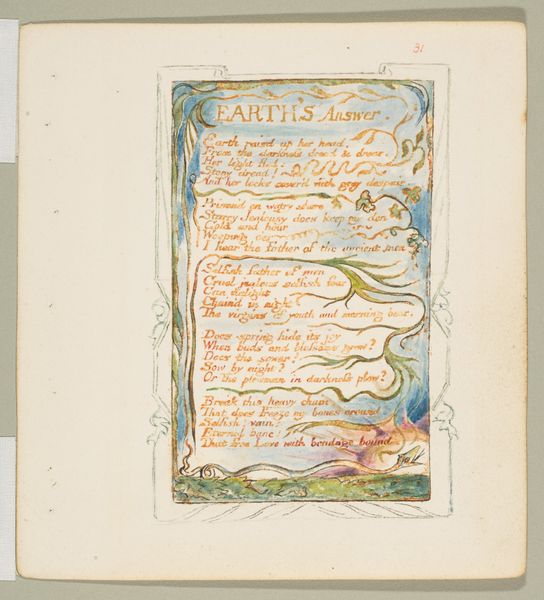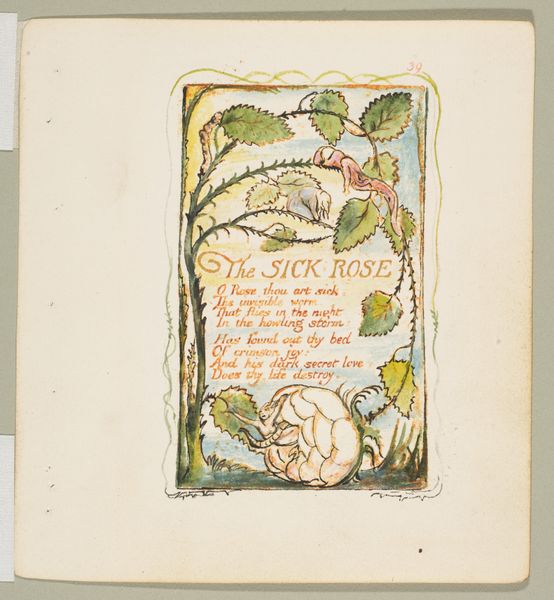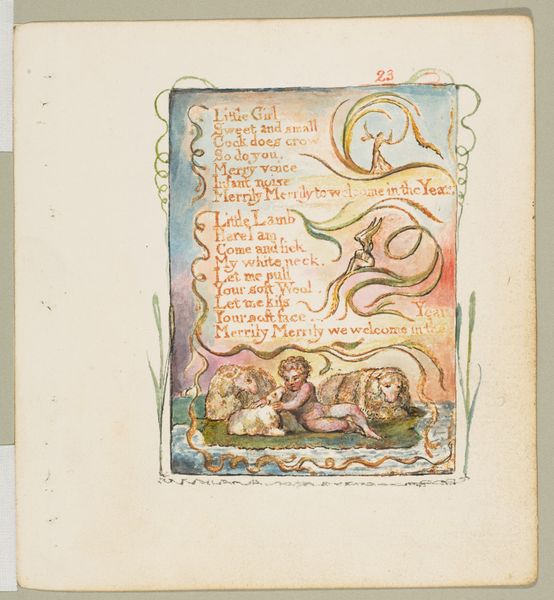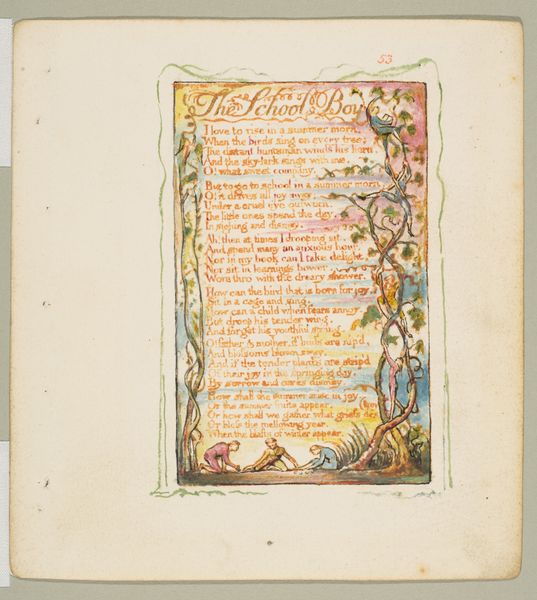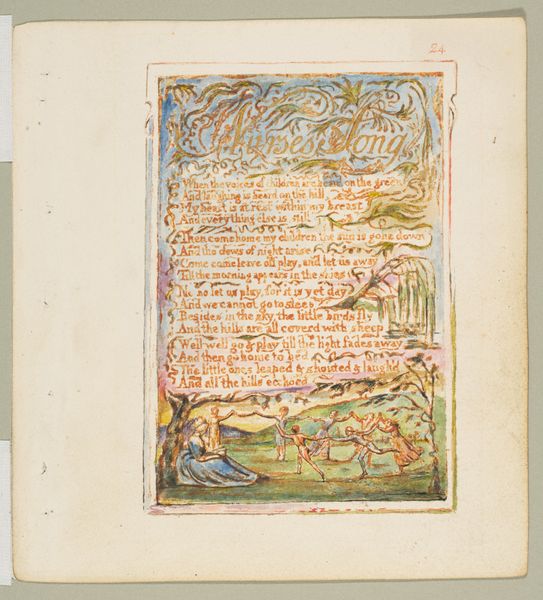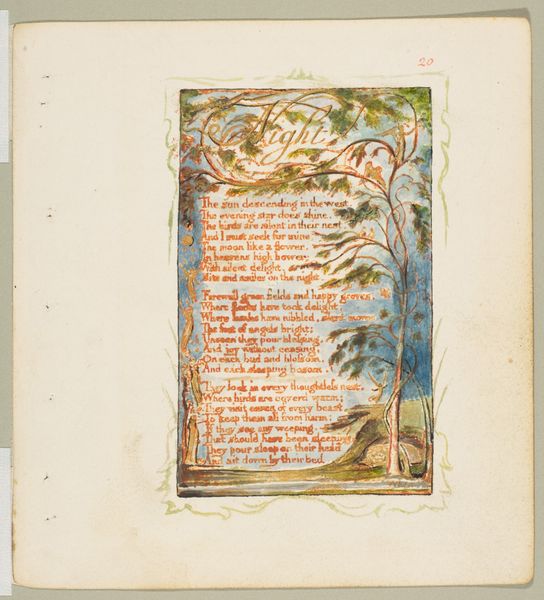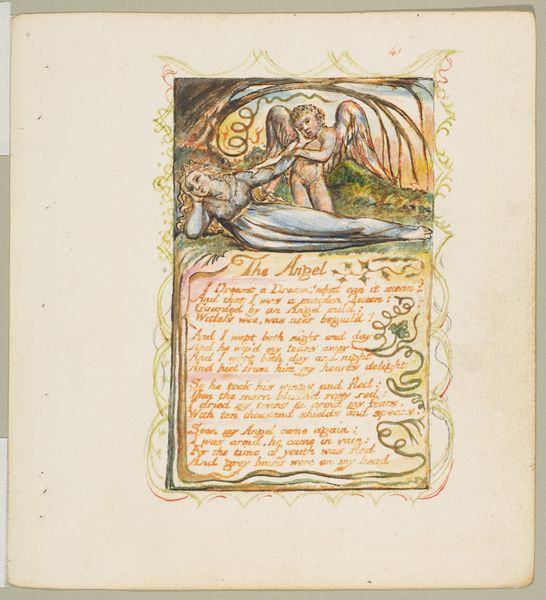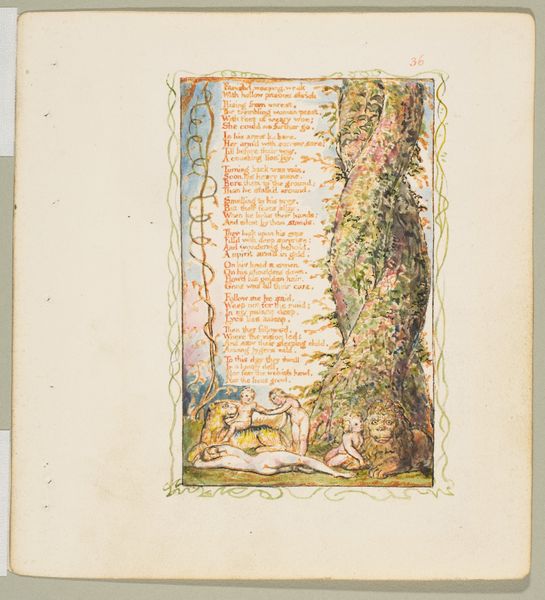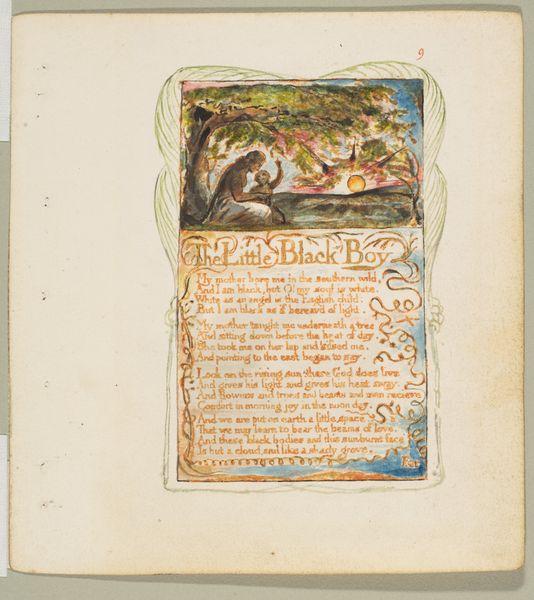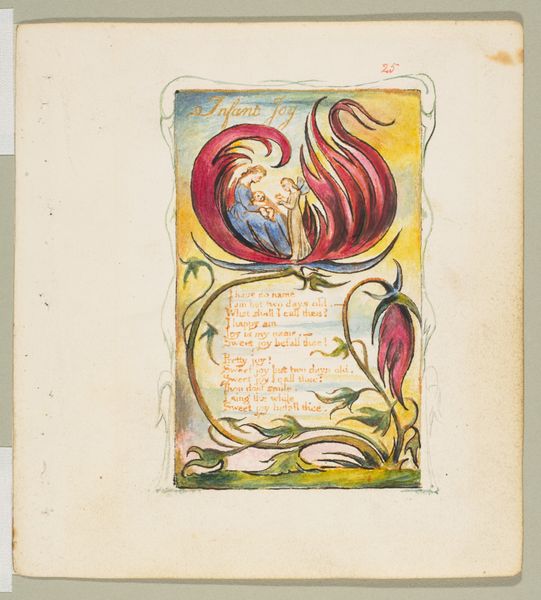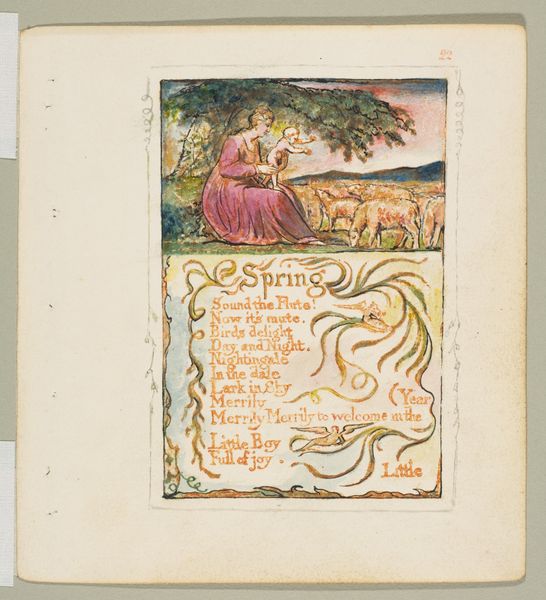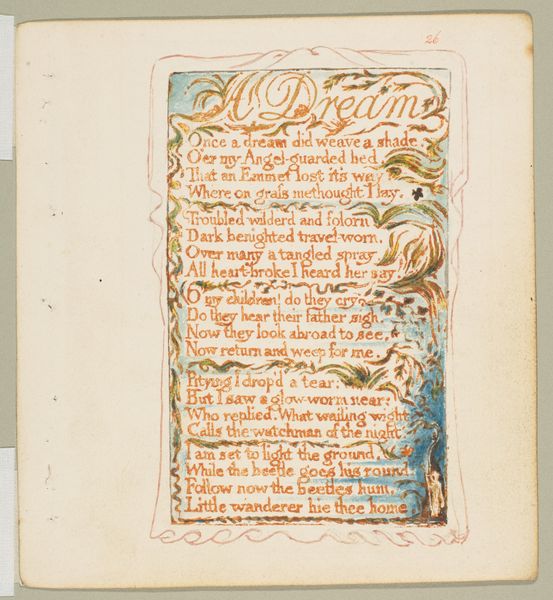
drawing, coloured-pencil, painting, print, watercolor
#
drawing
#
coloured-pencil
#
narrative-art
#
painting
# print
#
figuration
#
watercolor
#
coloured pencil
#
romanticism
Dimensions: sheet: 6 3/16 x 5 9/16 in. (15.7 x 14.1 cm)
Copyright: Public Domain
Curator: We’re standing before "The Blossom," a colored pencil, watercolor and ink print created between 1789 and 1825 by William Blake. Editor: It has a dreamlike quality. The figures seem suspended, floating amongst these vibrant, otherworldly branches. Curator: Indeed. Blake merged text and image in ways that challenged conventions of his time. Consider the sociopolitical context of the Romantic era – its move toward the primacy of emotion. "The Blossom" appears in Blake's "Songs of Innocence." What can we glean of its original intent as part of an extensive commentary on the state? Editor: Well, the most striking element for me are the figures, which seem like angels or spirits nestled in this fantastical tree. They evoke a sense of protection, of something hidden and cherished. Note the visual echoes with the "bosom" mentioned in the text itself. What associations can we derive from the use of textual framing here? Curator: Blake consistently challenged prevailing orthodoxies. Note how he critiqued institutions, including organized religion and societal power structures, with subversive yet whimsical counter-narratives. For example, he placed naked beings into many artworks. What impact would this detail had had during that period? Editor: I find it intriguing how Blake employed color, and the specific tonalities chosen. Those vibrant shades seem intentionally naive, harkening back to the initial perceptions and inherent ideals present in a child's world view. There's a fascinating interplay between the textual element – the "sobbing, sobbing Robin," and this almost euphoric, visual context. Curator: Yes, it is quite complex, reflecting Blake's revolutionary vision of innocence and experience, infused with profound social critique. Editor: It's a poignant reminder that visual motifs speak to universal themes across the ages, filtered and changed with each culture and generation that interprets and expands upon them.
Comments
No comments
Be the first to comment and join the conversation on the ultimate creative platform.
